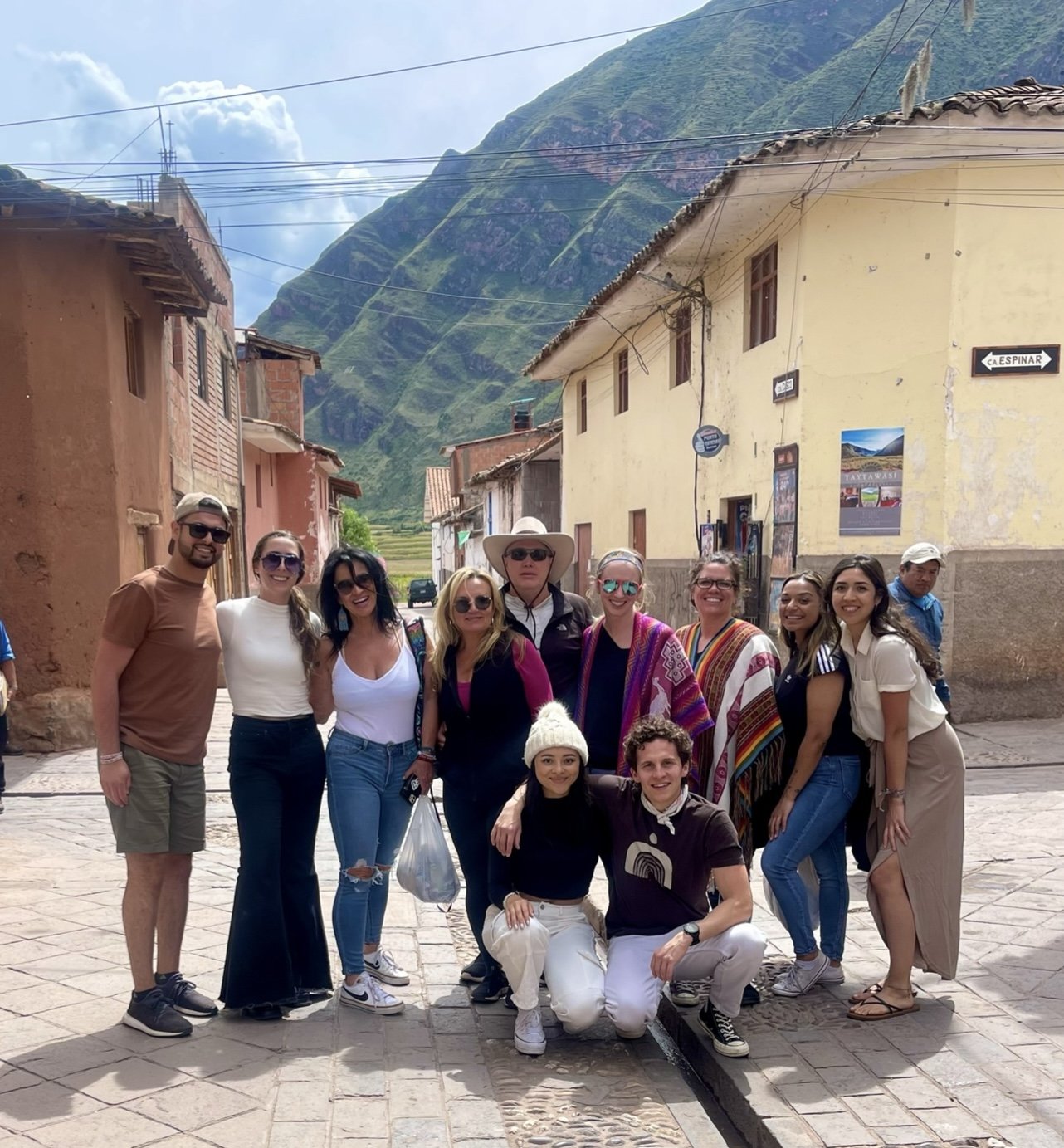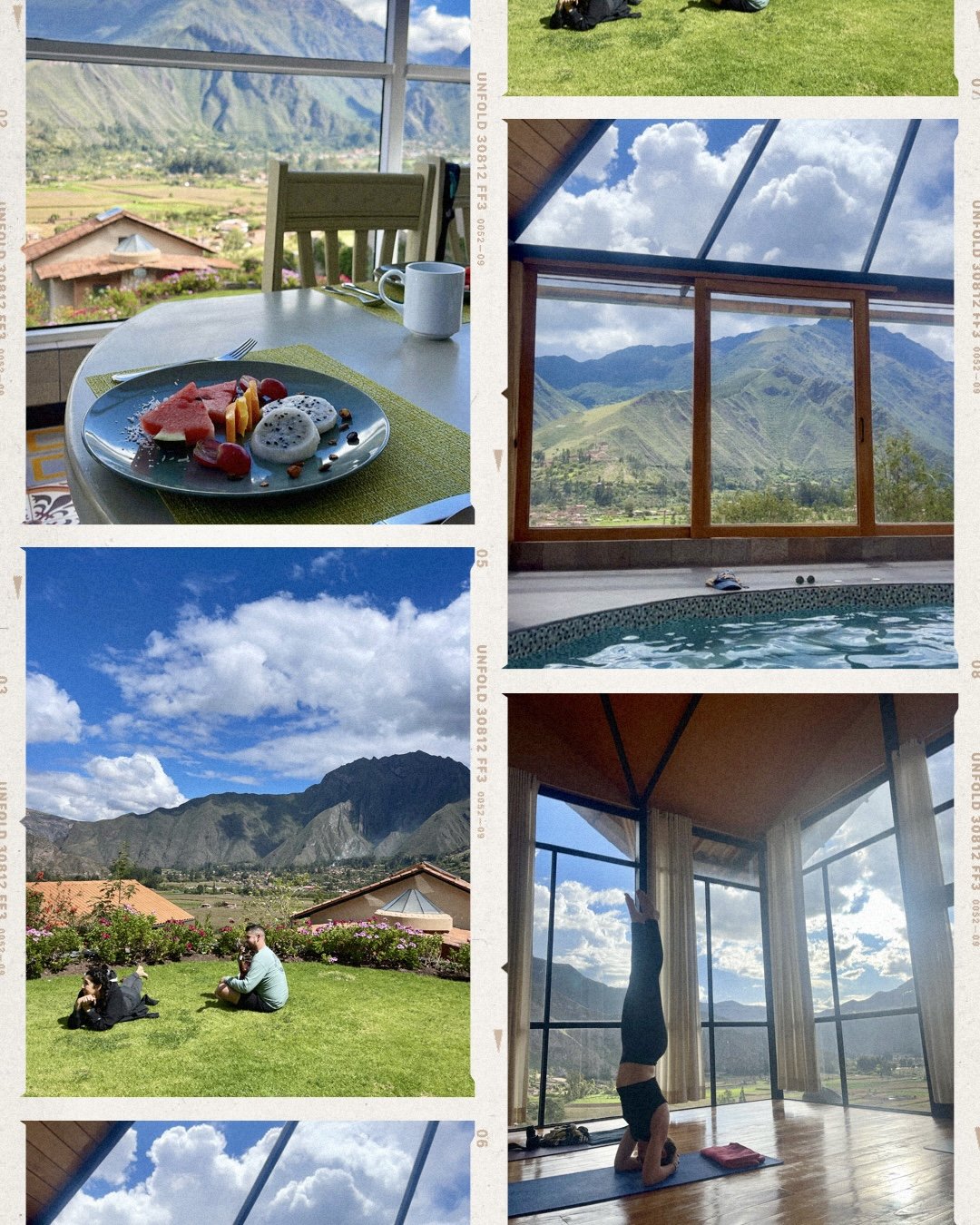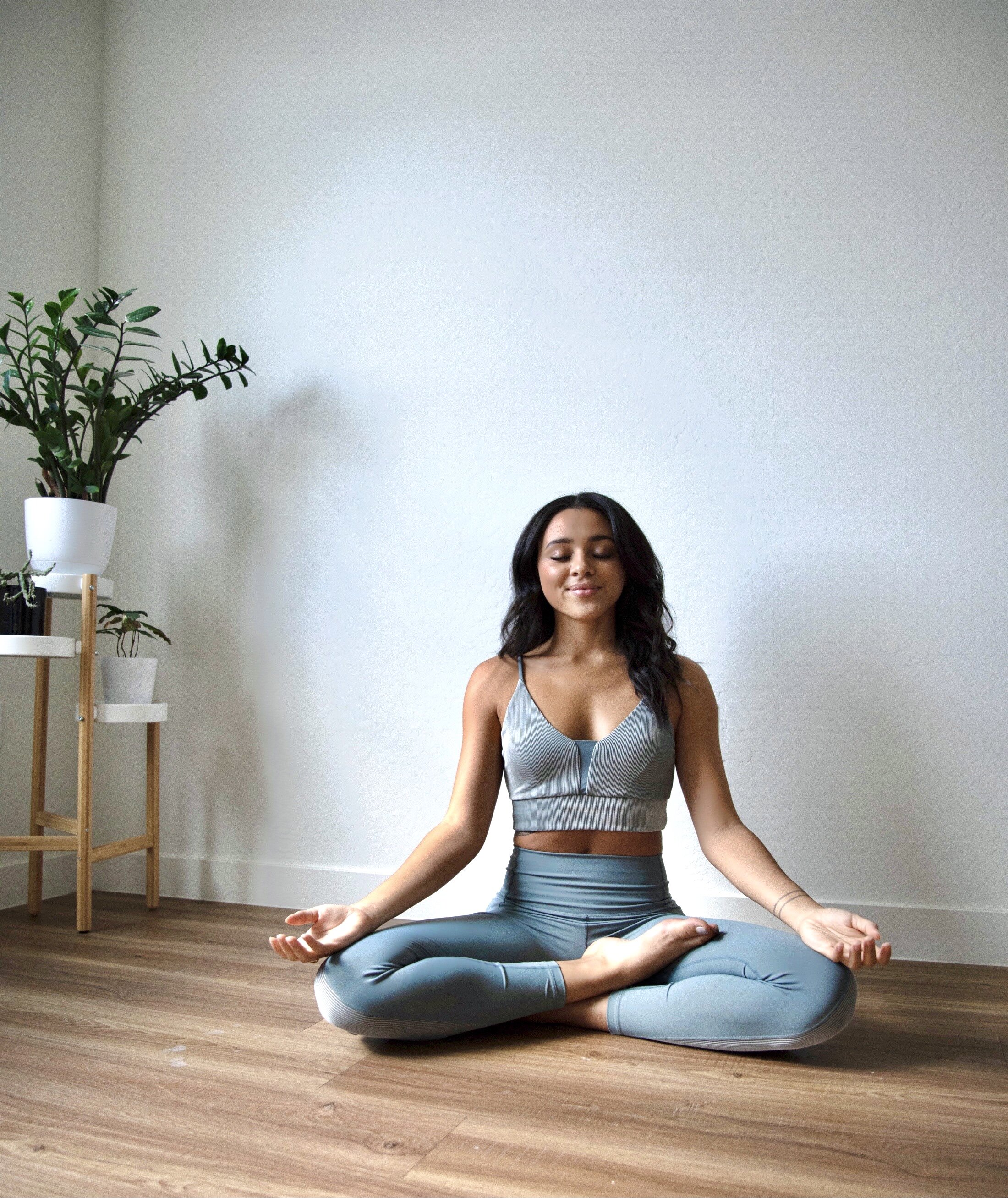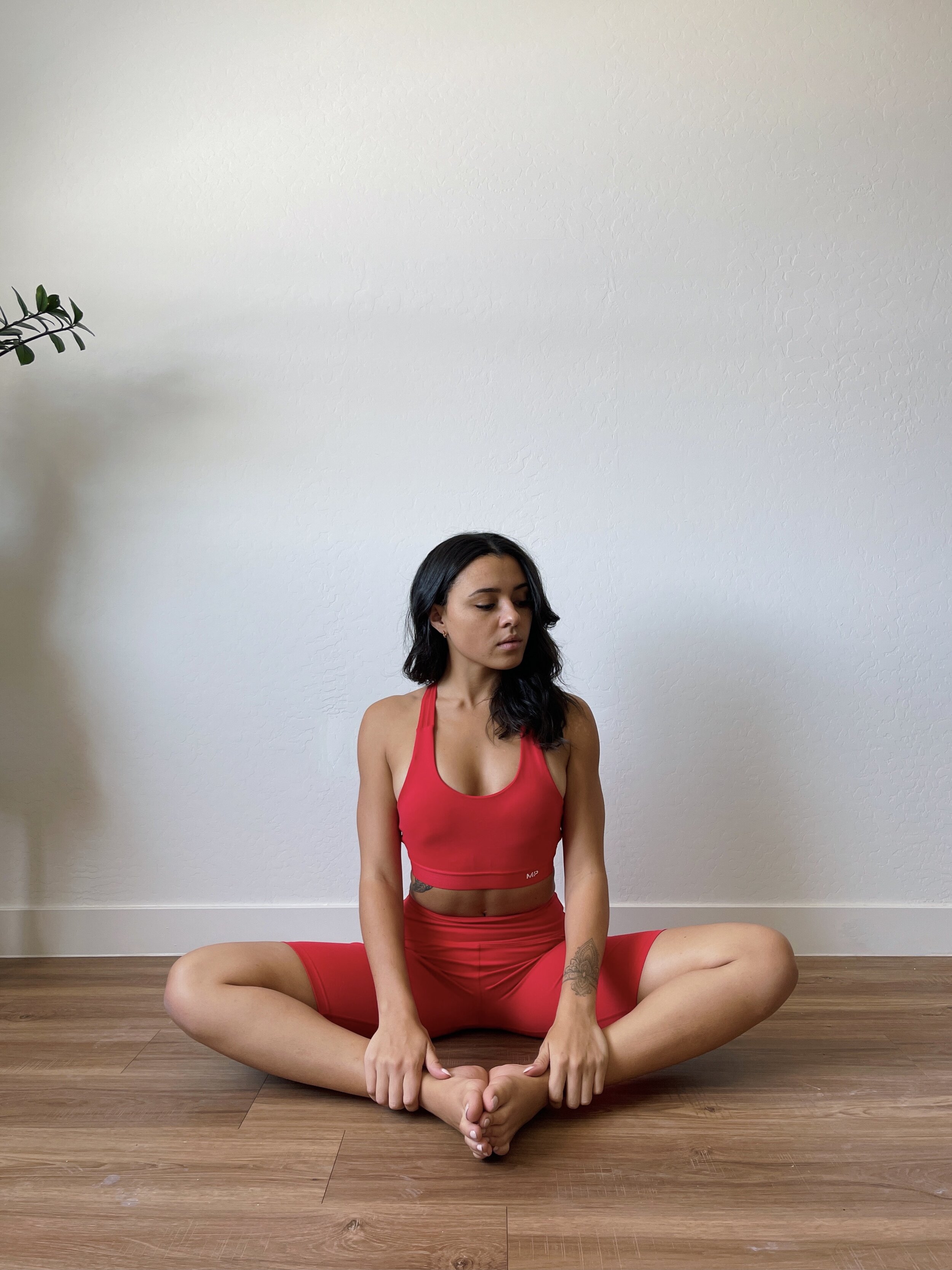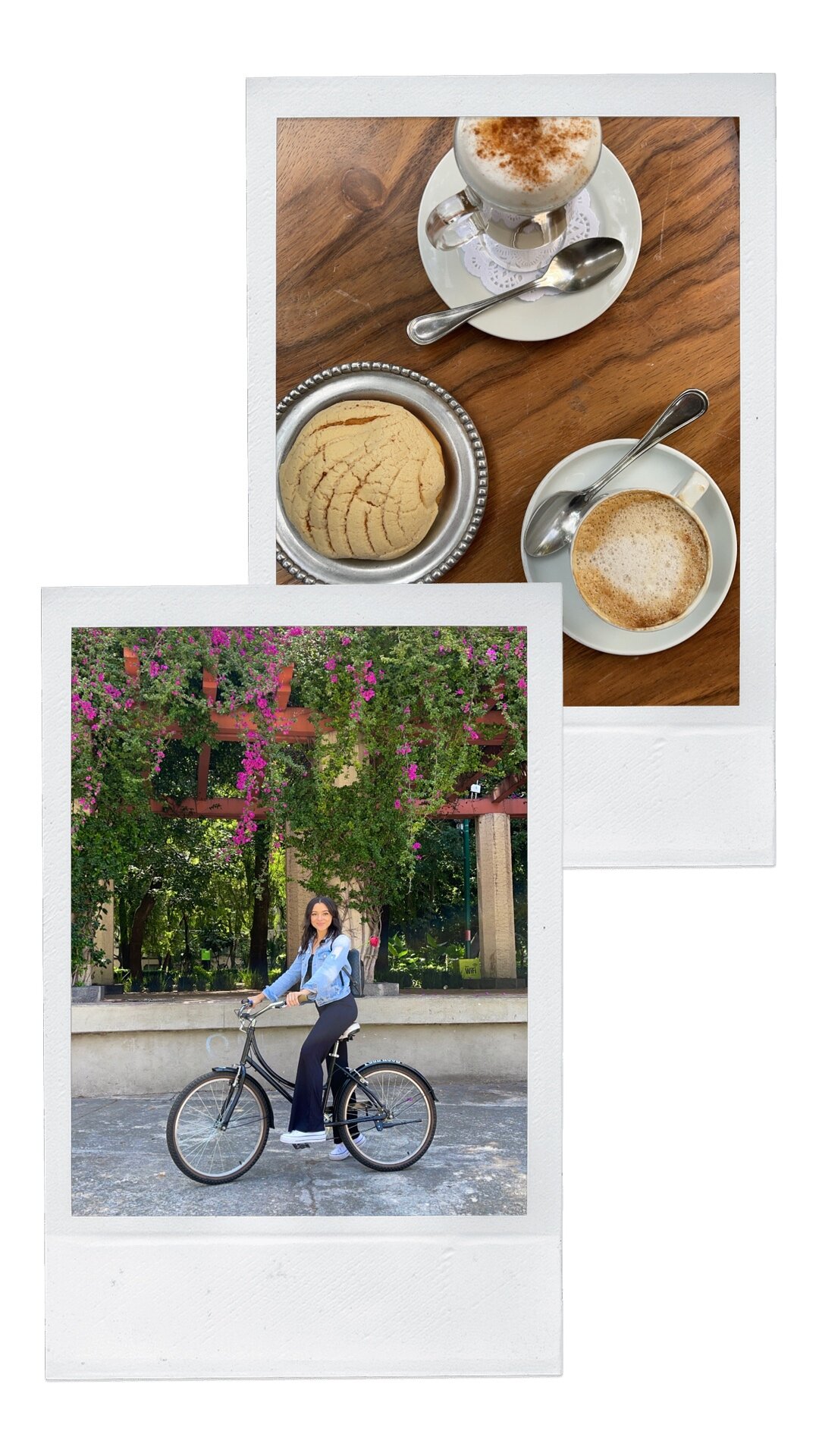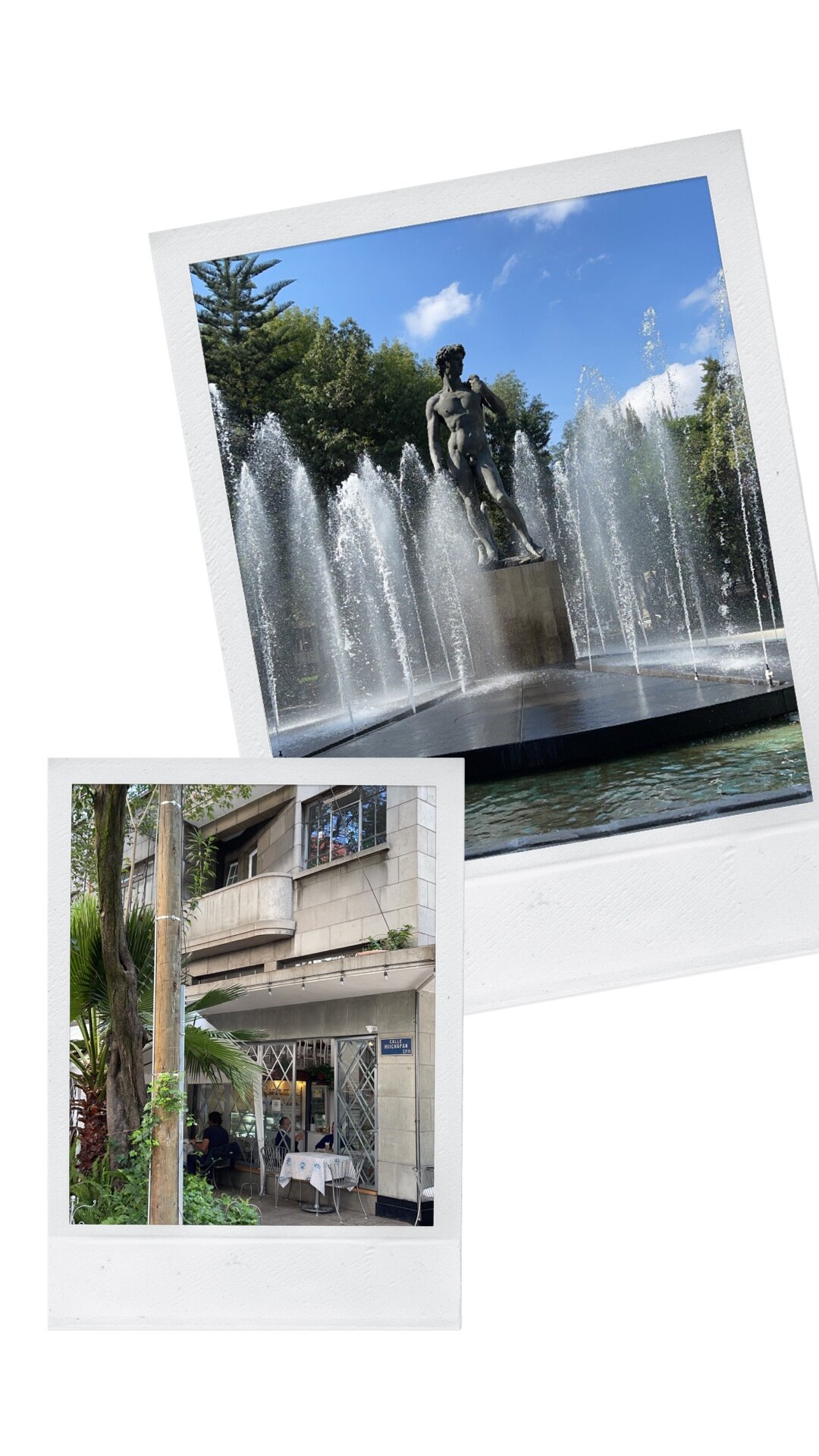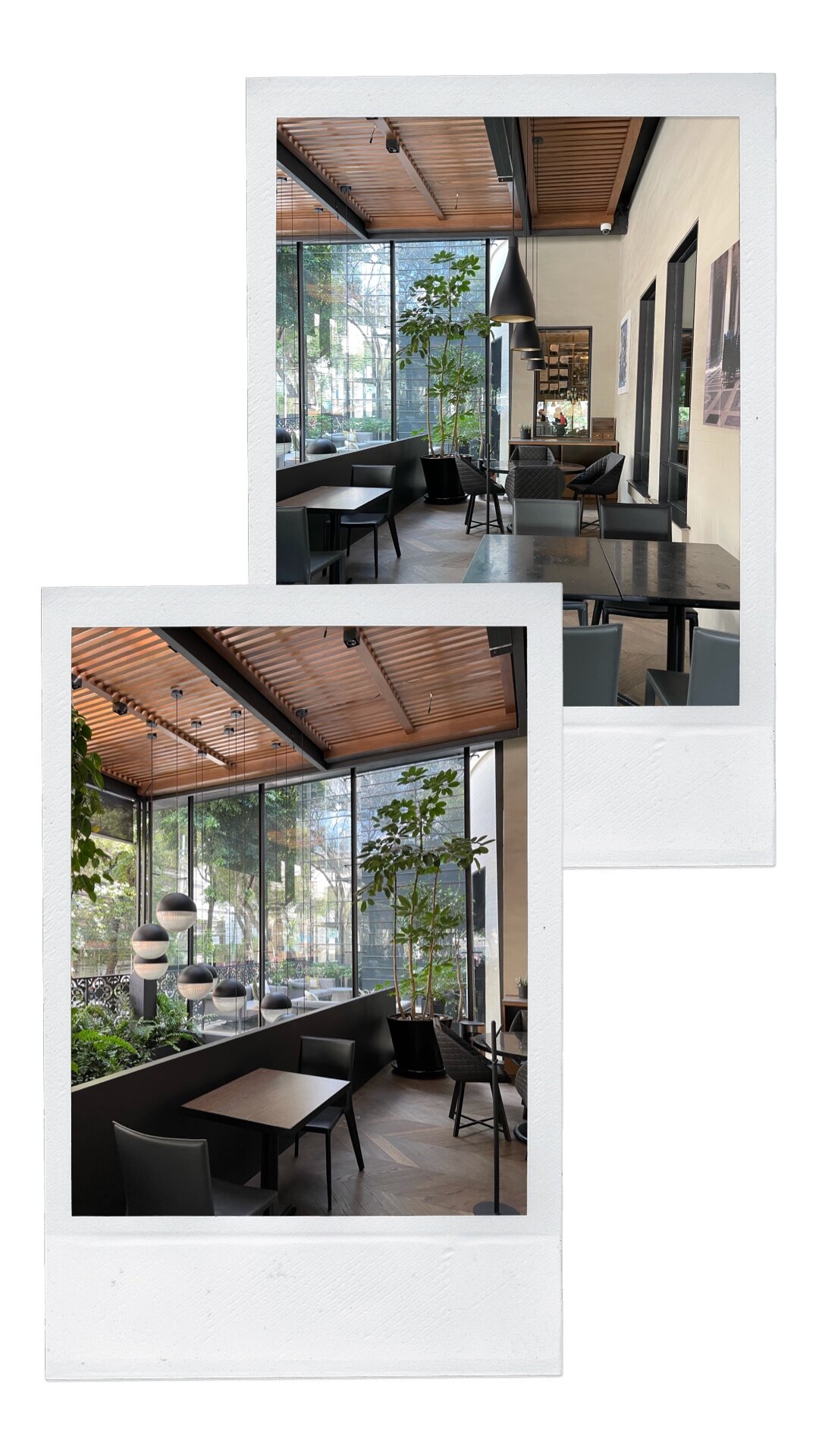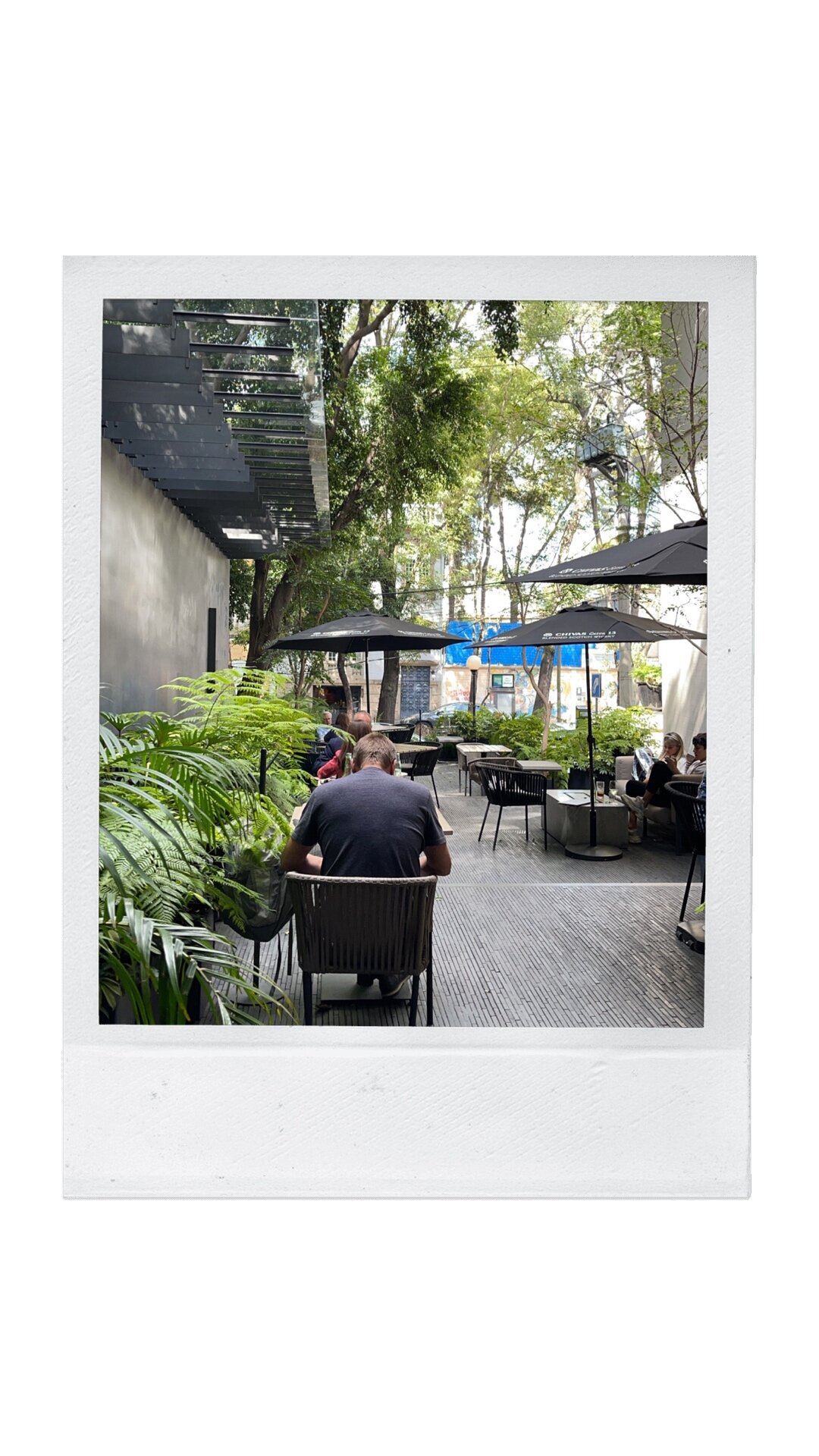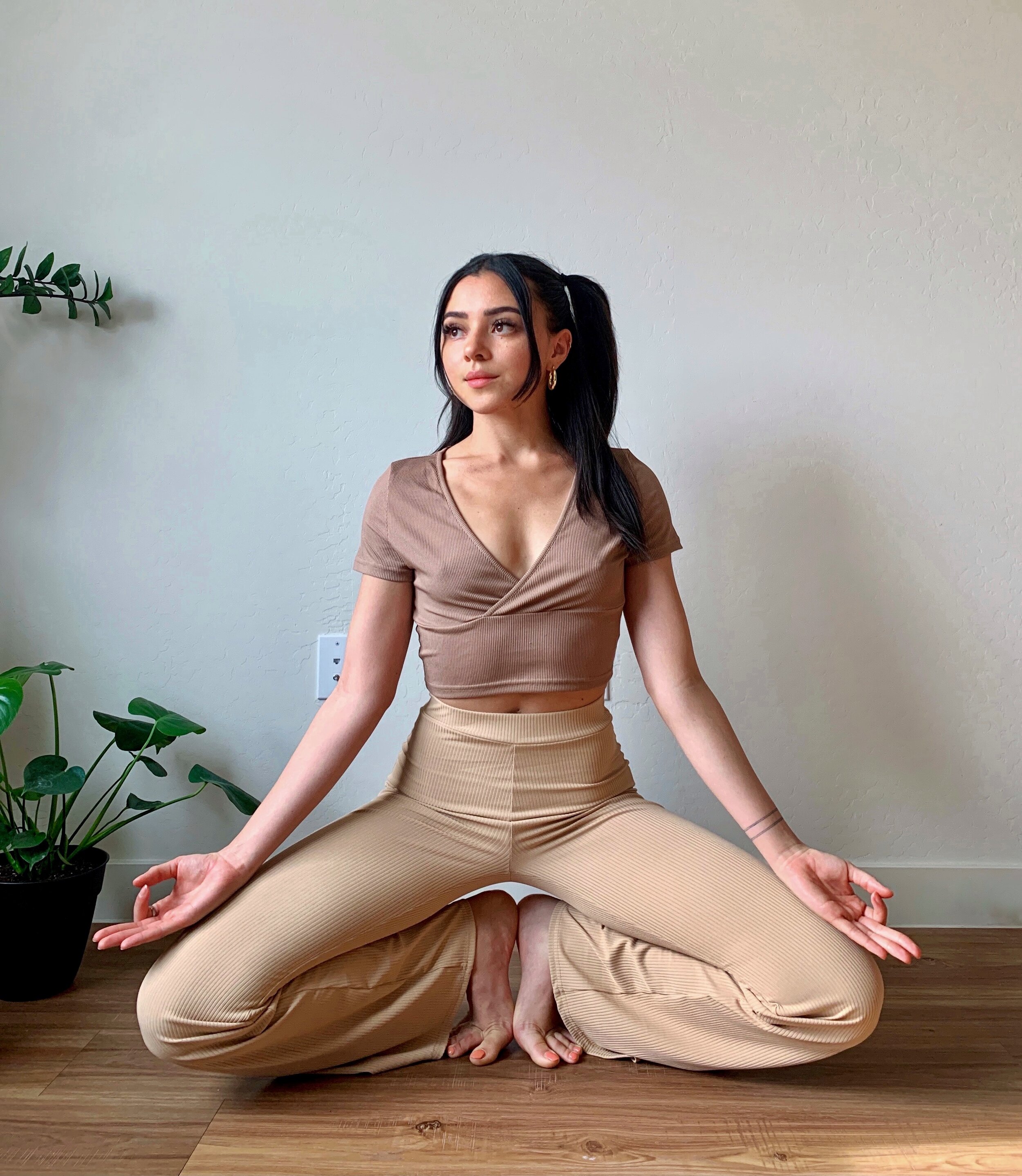In April we took a journey to the beautiful country of Peru for our 7-day ‘Yoga & Adventure’ retreat. This was the first retreat offered in over two years which made it feel truly special. Our trip was centered around exploring Peru and learning about its culture. Some of the highlights of the trip included visiting one of the seven wonders of the world - Machu Picchu, as well as the Pisac Market and Moray and Maras.
Our time together included yoga, meditation, hiking, sound healing and heart centering. We were nourished by the local organic cuisine, special teas and treats, sacred ceremonies and more. Here is a recap of our adventures…
Day 1 — ARRIVE
Around 1pm we arrived at Alejandro Velasco Astete International Airport located in Cusco, and was met by our driver. She took us through the town of Cusco and Pisac, stopping along scenic spots to explore and take photos. It was such a surreal moment to finally have arrived in South America! The views were simply breathtaking.
About an hour and a half later we made it to our retreat sanctuary, Samadhi, which is hugged cozily in between the Andes Mountains. Samadhi houses ensuite mountain bungalows- each representing one of the seven chakra energy centers in the body. Immediately upon arrival you can feel the serene and mystical power of the Sacred Valley, which is considered one of the most energetically powerful places on Earth. It was an honor to have this beautiful space as our shared home for the week.
We spent the evening getting settled in, exploring the retreat grounds and meeting people from our group - some arriving from solo-travels, others with family. Our group ended up being people from all over - Arizona, California, Washington, Virginia, Utah, and even London.
It’s always amazing to meet everyone in person and to feel an immediate sense of connection. After we had all unpacked and enjoyed some free time, we spent our first dinner together and had a fire pit underneath the stars.
Day 2 — GROUND
We started our first morning off with a hatha yoga flow at 7:30am. The morning air felt crisp and clean, and the birds were chirping a warm welcome as we made our way to the sun shala, which overlooked the incredible Sacred Valley. The morning class focused on slow grounding movement with mobility and static stretching to help open up our bodies and to prepare for the day ahead. We started with breathwork connecting us to the present moment, and then began our flow.
After yoga, we enjoyed breakfast with a beautiful view of the mountains.
After morning yoga and breakfast, we prepared for our Native Despacho Ceremony. This ancient indigenous ritual of the Andean people is a creation of a mandala-like bundle or offering which serves as a gift to Mother Earth, Pachamama.
The gift is also used to transmit intentions of gratitude and to help us manifest the greatest desires of our life using earth elements as the sacred messengers.
Despacho, “dispatch,” refers both to the ceremony and the sacred bundle being offered. The traditional despacho ceremony begins with the practice of creating sacred space by calling in the helping spirits of the earth, the mountains, the elements, the animal archetypes, the sky and the ancestors - the paco sets the stage for support in carrying the prayers to Pachamama.
We came back to the main retreat space to have lunch before heading off to our next adventure. The food at Samadhi was one of my favorite parts of the retreat. The dishes were all organic, farm-to-table, balanced and healthy, prepared by gastronomic artists-chefs. We had three meals each day along with tea and herbs from the Sacred Valley - it was such a treat! During lunch we continued to chat and pulled some tarot cards.
Our final adventure for the day included an afternoon trip to Moray and Maras.
Moray is an archaeological site in Peru that contains ancient Incan ruins, mostly consisting of several groups of incredible circular terraces. It was so interesting to learn about the history here…
The Inca Empire had no written language. Without any written information from the Incas, the purpose of the Moray Inca Ruins remains a mystery. There are many theories, one of the most popular ones being that the ruins were used as an experimental site for agriculture.
We walked around the site and planted intentions in the Earth for our future.
Next to the Moray Inca Ruins, we explored the Maras Salt Mines, which contains around 6,000 salt ponds. Families from the small village of Maras own the ponds. They harvest and sell this famous Peruvian salt all around the world. Afterwards we walked around a few shops to purchase some salt ourselves.
We made it home just in time for evening dinner where we relaxed, ate delicious pasta with dessert and then headed off to sleep!
Day 3 — HEAL
The next morning we woke up to soft spring light and clouds rolling over the hills, casting a haze and shadows on the mountain tops. It was time for our vin to yin yoga class. The practice focused on long-held postures that helped to open up the full body and release stored emotions. We started with a vinyasa flow to shake out old, stagnant energy, and then relaxed into a restorative stretch.
After our morning yoga class, we had breakfast in the dining area. Today was the day our group had extra free time. We spent the afternoon relaxing, lounging in the hot tub, walking around the town, workshopping yoga poses, taking photos and laying out in the sun.
Our evening ended with a 90-minute group sound healing session. This was a truly unique experience that brought healing through sounds and vibrations. We began with a guided meditation with breathwork, leading into an ancestral musical adventure that allowed us to feel the connection with the elements of nature: earth, fire, air and water.
We ended the evening early after dinner to prepare for our big morning ahead.
Day 4 — EXPLORE
We greeted the early morning before sunrise. By 4:30 we were on the road to Machu Picchu! An hour later we arrived in Cusco where we took the Perurail to Aguas Calientes, a town in the Urubamba River Valley, known as a gateway to the nearby Inca ruins. The town center is full of eateries, shops and craft markets. From there we took a quick bus ride up through the jungle terrain and mountains.
Machu Pichu sits in the heart of the Peruvian Andes in the middle of a tropical mountain forest. It’s lush, green vegetation stands out against the vibrant blue shades of the sky and mountains. When we reached the top of the trek, we were all in awe. The beauty and magnificence of this landscape in person doesn’t compare to any pictures. To this day it is one of the most beautiful settings I have ever seen.
After walking closer to the terraces, we took off our shoes and planted our feet in the grass, sensing Earth’s energy beneath our feet and feeling grateful for the ability to ground. We took a moment to stretch and bask in the sun rays. Then our tour guide shared more information about the ancient history of Machu Picchu.
Similar to the Moray Inca Ruins, many of Machu Picchu’s mysteries remain unsolved. It’s believed to have been built in the fifteenth century, and served as a royal estate or sacred religious site for Inca leaders. It was abandoned when the Inca Empire was conquered by the Spaniard in the sixteenth century. It wasn’t until 1911 that this historic sanctuary was made known to the outside world.
We spent the afternoon meditating, practicing breathwork and learning more about the architecture and landscape of Macchu Picchu. Our group agreed this was the best day.
Later we made the hike back to the entrance where our bus took as back to the town center. We ate at a delicious local restaurant called Chullos and reflected on our trip. Afterwards we made the journey back home where we were greeted by the lovely staff that was taking care of us. We enjoyed dinner together and then headed off to bed.
Day 5 — expand
We started the day sleeping in before heading to breakfast at 8am. After a nutritious meal, we took a car ride to Ollantaytambo, where we hiked for about an hour and a half. Our intention for the hike was to take our time, move slowly and truly enjoy being in the present moment. There was no rush, no race or sense of urgency. It felt so good to relax into being, rather than get caught up in the go-go-go, fast-paced mentality that is engrained within us on a daily basis. This hike was truly healing. Along the way we did a tree meditation beside the stream. We spent time connecting to nature, listening to the sounds of the water and giving ourselves time to enjoy the incredible views.
We also took some time with the sacred coca leaf to make an offering to Pachamama. The coca leaf is an integral part of the lives of the Andean people from both a cultural and traditional medicine perspective.
This ritual consists of holding three coca leaves and joining them with two hands. Traditionally, each coca leaf represents one of the three different worlds in Andean cosmo-vision: Uju Pacha (the under world), Kay Pacha (the surface world we inhabit as humans, also known as Pachamama), and Janaq Pacha (the upper world). The under world is symbolized by the serpent, the surface world by the puma and the upper world by the soaring condor. Shamans believe that these three leaves are necessary for communicating with the gods of these different worlds – they are literally the spiritual channel for traveling and delivering important messages between all three worlds. The leaves are then blown as a sign of respect for the gods of nature such as the sun, the mountains, the lagoons, the earth, etc.
The coca leaves also have many medicinal properties, including increased stamina and endurance, as an aid to digestion and as a treatment for altitude sickness or fatigue.
When we reached the end of the hike we came across ancient ruins. We sat down in a circle sharing our experience, what messages came up to us and what we were feeling in the moment. For me it was a beautiful and emotional moment of connection. A realization that this retreat was happening because I chose to listen to my heart and my own intuition. The message that suddenly became clear to me was: always follow your heart. When you want something, spirit/universe will guide you and support you along the way. Trust yourself and your own inner wisdom. I was filled with a deep sense of gratitude and peace.
We ended our hike with a cold plunge in the stream. One by one we eased into the cold, rush of water, immersing our bodies as we scooped cups of the river water over our heads. We encouraged each other during the plunge to breath through the discomfort. It was a symbolic moment of courage, rebirth and deep purification. Afterwards we felt alive with more energy and clarity. Finally it was time to make the trek back home.
We arrived in time for an appetizing lunch and then had free time to enjoy the afternoon however we liked. Some indulged in a massage or facial, while others relaxed in the shared amenities. The following evening we had a candlelit vin to yin yoga class focused on backbends and opening the heart. Our theme for the day was “expansion” - physically, mentally and spiritually. We practiced a full body flow as the sun set over the mountain horizon. The night ended with dinner as always, together.
Day 6 — connect
“The intuitive connection is more than a feeling, it’s a harmonization of being.”
We started our final full day together with a morning yoga class. Our practice was a vinyasa flow to connect to ourselves and tap into our intuition, setting the intention to be mindful of how we were feeling.
Our final excursion of the retreat was a trip to the town of Pisac to visit the Pisac Market, where people from the surrounding communities come together to sell and buy produce, textile products, jewlery, pottery, crafts and other supplies in the town’s central square. This is one of the most famous food centers in Cusco. It’s centuries old, since the settlers used to meet there during the colonial era.
It took about an hour to reach the market area. Upon arrival we found the cutest cafe called Kula, where we got coffee to go. The town was so vibrant and beautiful to walk through - with many different textures and colors it felt so welcoming to explore. We came across women with llamas decorated in colorful tassels and pom poms all over the market. In exchange for a few soles we took a few photos to commemorate the trip. These photos are my absolute favorites. After spending a few hours exploring the town we made our way back to the car and headed back to Samadhi.
Immediately we had lunch and then headed off to our final free time activities. A group of people relaxed with massages, while others enjoyed a creative painting class as well as traditional pottery lessons.
Finally it was time for our evening yoga practice. This class was special as it was our final flow of the retreat. The class centered around a reflecting slow flow. The practice began with a guided meditation to reflect on the past week - the lessons learned, the conversations had. And then I invited everyone to envision their lives outside of the retreat center, back to their families, their friends, their job and responsibilities. We began to visualize how we would like to embrace our new lives moving forward and how to integrate such a unique experience. I wanted everyone to set an intention for their final practice and to remember to cultivate this guiding principle or feeling back home.
Our final day together ended with a pizza party and bonfire where we reminisced on our favorite parts of the retreat and sang songs together.
Day 7 — depart
We enjoyed our last breakfast together as a group, and then prepared for our closing ceremony with gifts. We were blessed to have an amazing group of sponsors for our retreat.
Thank you to…
Intelligent change for gifting our Five-Minute Journals and Health & Wellbeing Affirmations
Mantra Medallions for gifting our Medallions
NOLAVA designs for gifting our Lotus Eye Pillows
MantraBand for gifting our affirmation bracelets
By noon we were all packed up and took a van as a group to Cusco for our departures.
The ending of this retreat was bittersweet. I felt a sense of longing and sadness for having to go our separate ways, but also a deep, newfound love and appreciation for the beautiful souls who came together. During this retreat we became family. It’s always a wonderful surprise when a group of strangers can connect so quickly and form a lifelong bond. It’s so rare and special. After spending a week courageously exploring, practicing vulnerability and connecting deeper to nature, ourselves and community, we left Peru ultimately feeling inspired to return home with these memories that will be cherished forever.
Until next time, x
Jess
P.S. — are you interested in coming on a retreat? Click here to be notified when my next retreats launch!

